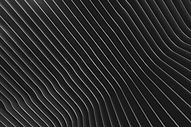LECO CS744 Carbon Analyzer
Redefine the way you determine carbon and sulfur in metals, ores, and other inorganic materials with our 744 series. Using extensive customer feedback and innovative engineering, the 744 takes advantage of our immersive Cornerstone® brand software platform and a number of features, such as an improved IR cell design and available automation, come together to increase usability, lab productivity, and lower your cost-per-analysis.

Redefine the way you determine carbon and sulfur in metals, ores, and other inorganic materials with our 744 series. Using extensive customer feedback and innovative engineering, the 744 takes advantage of our immersive Cornerstone® brand software platform and a number of features, such as an improved IR cell design and available automation, come together to increase usability, lab productivity, and lower your cost-per-analysis.

Redefine the way you determine carbon and sulfur in metals, ores, and other inorganic materials with our 744 series. Using extensive customer feedback and innovative engineering, the 744 takes advantage of our immersive Cornerstone® brand software platform and a number of features, such as an improved IR cell design and available automation, come together to increase usability, lab productivity, and lower your cost-per-analysis.


The CS744 carbon/sulfur analyzer is designed for wide-range measurement of carbon and sulfur content of metals, ores, ceramics, and other inorganic materials. The instrument features custom software designed specifically for touch operation. A pre-weighed sample of approximately 1 gram is combusted in a stream of oxygen using RF induction to heat the sample. Carbon and sulfur present in the sample are oxidized to carbon dioxide (CO2) and sulfur dioxide (SO2), and swept by the oxygen carrier through a drying reagent and then through a non-dispersive infrared (NDIR) cell, where sulfur is detected as SO2. The gas flow continues past a heated catalyst, where carbon monoxide (CO) is converted to CO2 and where SO2 is converted to sulfur trioxide (SO3), which is subsequently removed by a filter. Carbon is then detected as CO2 by another NDIR cell. A pressure controller is used to maintain constant pressure in the NDIR cells so as to reduce interference from natural variations in atmospheric pressure. The final component in the flow stream is an electronic flow sensor, which is used for diagnostic purposes to monitor the carrier flow. Non-dispersive infrared cells are based on the principle that CO2 and SO2 absorb infrared (IR) energy at unique wavelengths within the IR spectrum. Incident IR energy at these wavelengths is absorbed as the gases pass through IR absorption cells. The concentration of unknown samples is determined relative to calibration standards. To reduce interferences from instrument drift, reference measurements of pure carrier gas are made prior to each analysis.
